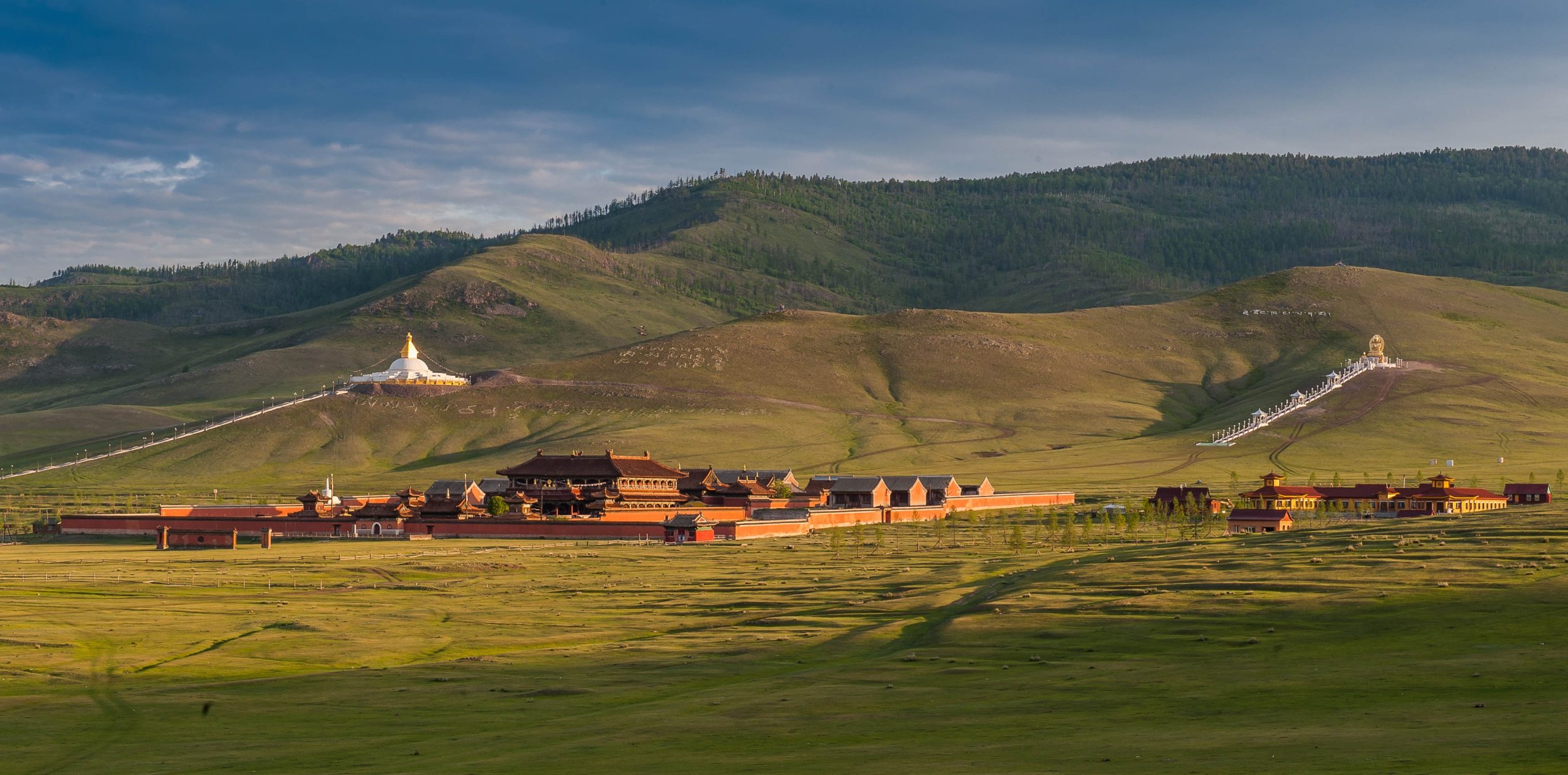It is located on the front side of Burenkhaan mountain and on the outflow of the Iwen River in Selenge province. In 1725, Emperor of the Manchu Dynasty, King Enkh-Amgalan issued a decree to allocate 100 thousand Lan (old unit of measure to weigh gold and silver bullion equal to 37.2 g) and ordered the building of a monastery dedicated to the first Bogd of Mongolia, Zanabazar as he respected Bogd Zanabazar’s deeds, knowledge, talent and wisdom.
In 1726, many Mongolian artists and blacksmiths started the construction work for the monastery, which was made with bricks and wood. Construction finished in 1737.
The name Amarbayasgalant is a Mongolian name. Legend says that when a group of monks was searching and surveying the land to build the Monastery, they came across two children, a boy and a girl, who were playing by building a house out of stones. It is said that the names of the two children were Amar and Bayasgalant.

During its peak, Amarbayasgalant Monastery housed 10 school temples, and more than 50 temples with approximately 6,000 monks. Currently there are 28 temples remaining within the monastery’s walled fence of 175×207 meters length. There are also more than 40 temples outside the walls including the Temple of Buddha, Ayush, Mahgal, Maidar, Narkhajid Temple, Bogd Gegeen’s Palace and the tomb of Undur Gegeen.
The Monastery was hit hard by the political persecution of Buddhism in 1937-1938 when hundreds of monks were executed. Rare and precious sculptures and artifacts of gods which had been accumulated for more than 200 years were destroyed beyond recovery. Later, in 1943, Amarbayasgalant Monastery was taken under state protection and restored.
Now the monastery has buildings such as Yanpai Gate, Mahranz Temple, History Temple, Incense burner, Tsogchin Dugan which is a complex masterpiece of Mongolian architecture, Lavrin Temple and Shar Palace, which is considered to be the hearth of Mongolia. The monastery housed the remains of the Undur Gegeen Zanabazar as well as the tombs of Bogd III and IV.
Another important cultural heritage, the manuscripts of 108 volumes of Ganjuur and 226 volumes of Danjuur in Mongolian language are kept at Amarbayasgalant Monastery. These manuscripts were created in 1628 and have more than 1,260 chapters covering ancient philosophy, medicine, geography, art studies, music, and astronomy.

Tsogchin Dugan is a 2-story building with an area of 32 x 32 meters. It is a beautiful architectural building unique not only in Mongolia but also in Asia in terms of craftsmanship and decoration. The 4 main pillars in the roof are made with grooves in the center, which is responsible for draining the rain and snow water from the roof.
Craftsmen and blacksmiths who participated in the construction of the monastery were awarded the following titles including “Knowledgeable Craftsman”, “Too Brave Craftsman”, “Diligent Carpenter”, “Sharp Craftsman”, “Great Craftsman”, “Resourceful Carpenter”, “Achit Craftsman” and were rewarded with money and sheep by the order of Enkh-Amgalan King of the Manchus.

In Amarbayasgalant Monastery, the Gongor Vase worshipping ceremony is performed. The Gongor Vase worshipping ceremony is held every year in August, and the ceremony is performed only in this monastery in a very precise order. Nine precious metals, rare medicinal herbs, juniper incense and tea are included in the Gongor Vase.
The person ordered to create it sacrifices the vase once a year, keeps it in pristine condition and does not allow it to be moved. When re-worshipping, it is brought to this monastery and sacrificed.
Because God Gongor himself is a white god, he is often created with pure white silver. Gongor’s Vase is believed to be “the vase of wealth”. By having the Gongor Vase created, virtues are enriched and wealth becomes abundant.
There is a Stupa named Jarun Khashor (meaning “promised”) near the Amarbayasgalant Monastery. There is a legend about this Stupa. A generous woman decided to build a stupa in order to collect wealth, and when she asked the king for permission, she was ordered, “Do whatever you want.” With the help of her four sons and a servant, two elephants and a donkey, the woman shoveled dirt and stones, and was about to finish building the Stupa. But the local aristocrats believed that a poor woman building a stupa would harm the dignity of the ministers and local rich and influential people and appealed to the king to make her stop. Then the king replied, “The king has made an order. Since I lost my mouth, I will not back down”. Because of this, the stupa was called “Jarun Khashor” which means promised.
The construction of such a stupa was initiated by Badam.O and Pagvajav.D, natives of Baruunburen village of Selenge province, on whose territory Amarbayasgalant monastery is located. This Stupa is also called the Eye Stupa, and it is said that if people who come to worship and pray look into its eyes, they will get rid of their sins.
Around the temple, 108 “Khurd” – prayer wheels – were installed which were made with the donations of the devotees. Each prayer wheel was embossed with the famous “Soyombo” symbol that was created by Zanabazar.G.

Behind the monastery, there is a monument comprising a 13-meter-tall statue of Bogd Zonkhov and his two disciples, Jaltsavji and Haidavji. It will take 108 steps to reach Bogd Zonkhov’s statue while there are 3 prayer wheels installed in the middle of the way to the statue.

